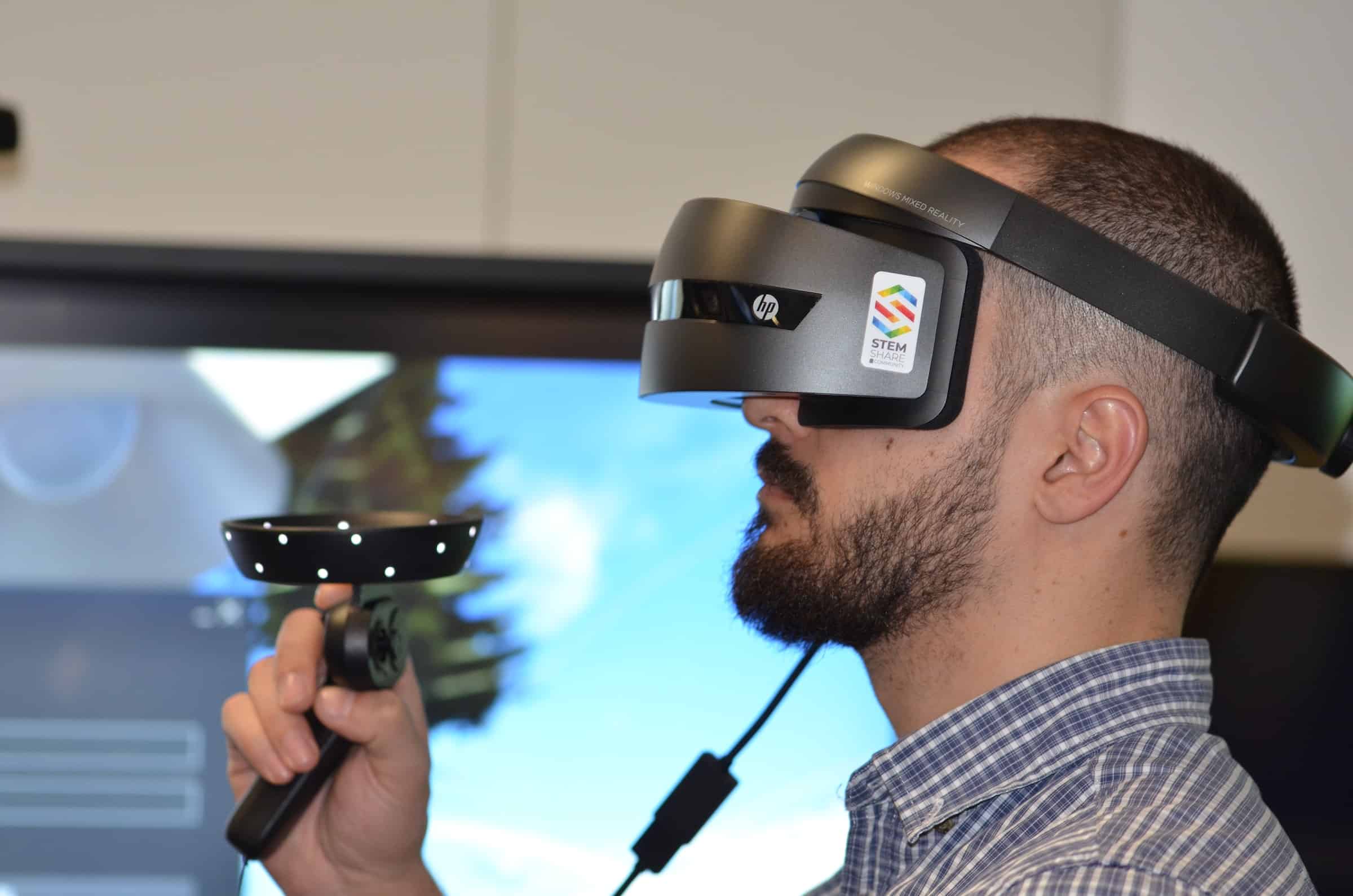Mark Zuckerberg’s Metaverse is one of the most ambitious digital projects of our time. According to the businessman’s idea, it should become an alternative reality, into which all processes from our everyday life can be transferred. Although the project is still at the initial stage of development, it is already attracting millions of users and tens of thousands of investors. If you want to join them, you should pay attention to the following applications.

1. Meta Horizon Worlds
Don’t be surprised, but one of the most successful Metaverse use cases is the sale of virtual real estate. Every user can buy a corner in this infinitely expanding alternative reality. The ownership of such an asset will be confirmed by a non-fungible token — NFT.
Meta Horizon Worlds is more than just a virtual reality game. Digital real estate can be used for conferences, concerts, art exhibitions, and other events. Customizable laws of physics allow you to test complex scientific hypotheses, including developing equipment for the aerospace industry and training nuclear power specialists. And of course, the platform is suitable for socializing, sharing ideas, and expressing emotions.
From a commercial point of view, Meta Horizon Worlds can be presented as a large-scale platform for exchanging digital assets. In fact, it is the largest marketplace in the world, capable of conducting transactions worth billions of dollars daily. According to experts’ estimates, it works at 5-10% of its potential today. Therefore, entering this marketplace today will give you a significant competitive advantage for the foreseeable future.
2. Microsoft Mesh
One of the largest technology companies in the world has contributed to the development of the Metaverse by introducing an application for collaborative work on projects. In it, users located in different parts of the world can immerse themselves in augmented reality to see the same materials in front of them. The platform allows them to interact with each other, combining efforts to achieve desired results.
Coming up with ways to use such an application is easy. These could be:
- scientific research;
- architecture;
- engineering;
- software development;
- graphic design;
- website development;
- design of transportation communications and so on.
The main advantage of the platform is its versatility and accessibility. You do not need expensive equipment to connect to it. An ordinary smartphone, cheap laptop, or desktop computer can be used. Of course, virtual reality headsets will work most effectively, but their use will not be a prerequisite.
3. NVIDIA Omniverse
A project that combines the best features of the previous two. It is an environment for developing 3D virtual worlds. It has convenient tools for working on 3D models that make up the “framework” of the future universe, textures, special effects, animation, and laws of physics.
The target audience of the project is game designers and specialists working in cinematography. Full immersion in virtual reality allows them to get along with the fictional world, fully unlocking their creative potential and getting a new source of inspiration.
The Omniverse platform utilizes Nvidia’s latest technological advancements, including:
- Ray tracing for realistic glare, reflections, flashes, and other effects;
- DLSS digital scaling, which improves image quality and reduces the load on the hardware;
- AI for on-the-go image generation that can make the virtual world unique for each user.
The app looks promising. The value of the market for which it is intended is measured in the tens of billions of dollars a year. The only thing preventing it from taking the top position is the high hardware requirements.
4. Google Starline
A platform for communication in the virtual world with a presence effect. Unlike its analogs, it emphasizes realism. It uses real 3D models of people rather than cartoon avatars.
The application is still under development and is not ready for commercial use. However, its creators regularly conduct impressive demonstrations. They use a combination of deep learning, machine vision, and spatial audio to create the illusion of being in the same room as interlocutors.
The main application of the platform in the first stage will be virtual conferences. Their realism is intended to compensate for the drop in productivity caused by the transition to remote work during the coronavirus pandemic. Subsequently, there will be other ways of using the application — communication with relatives, business negotiations, dates, lectures, seminars, and so on.
Today, the Google Starline project uses a rather bulky set of equipment. However, engineers promise that it can later be replaced by a single gadget containing several cameras, infrared sensors, and microphones.

5. Roblox
A top platform for creating VR games using simplified programming methods. Its target audience coincides with the general demographics of the Metaverse. Gen Z are the ones most interested in it — 64% of them are attracted to VR technology, while another 11% are neutral or inexperienced.
Roblox is a successful and commercially stable project created back in 2006. Its current audience is estimated at 150 million users, and the amount of capitalization exceeds 50 billion dollars. At the same time, VR is a relatively new direction of development of the application, which allows you to become an innovator by joining this platform.
One of the Roblox advantages is a relatively low entry threshold. To start developing your own game, you need neither deep technical knowledge nor a powerful computer.